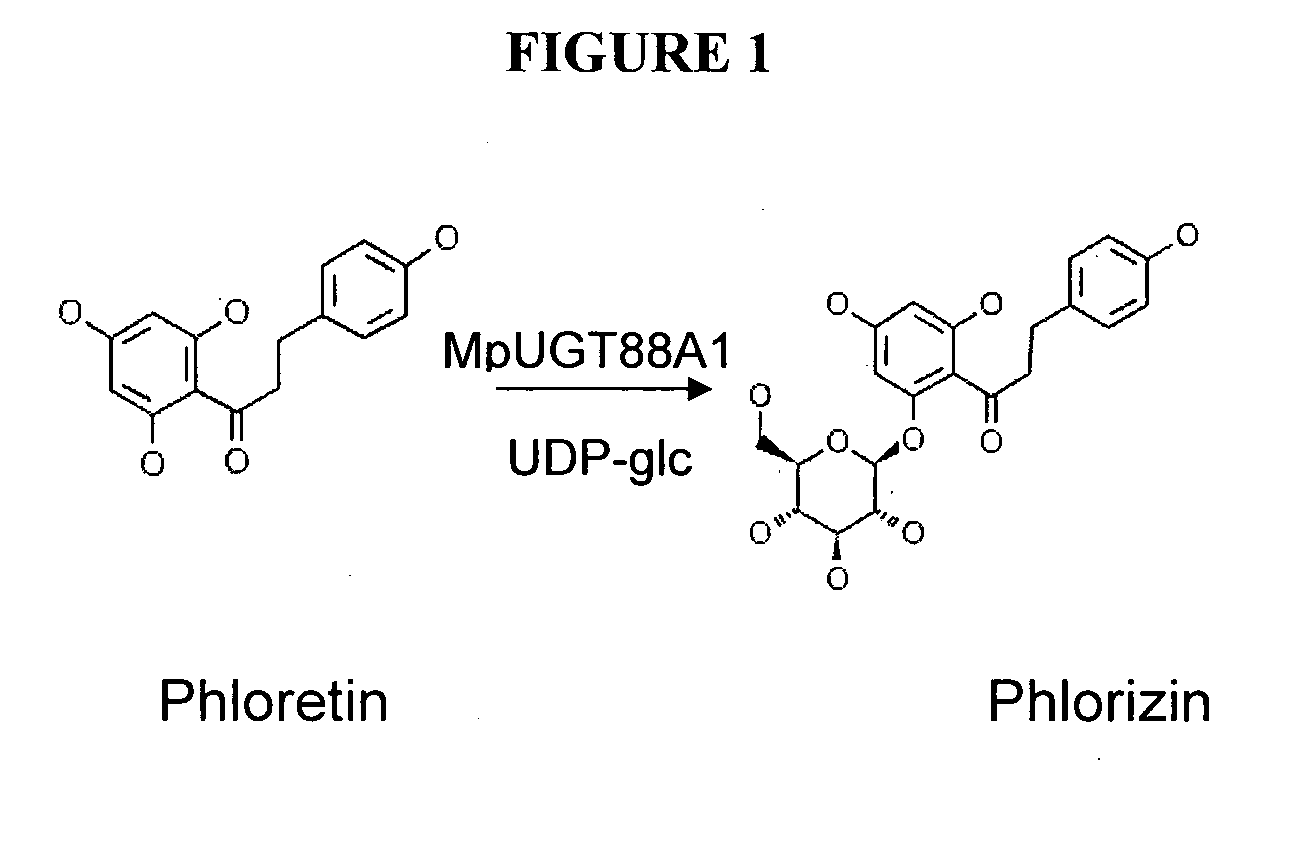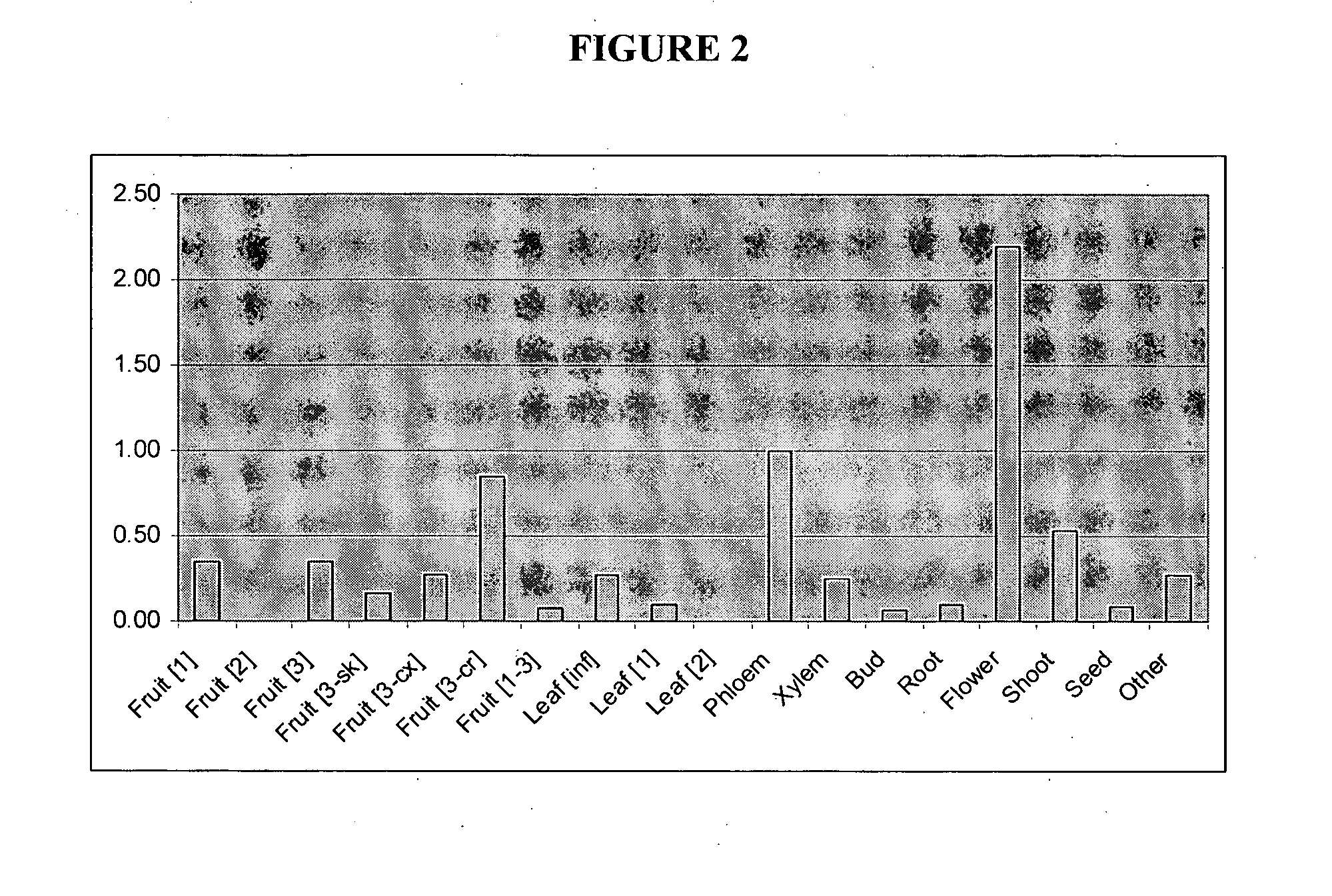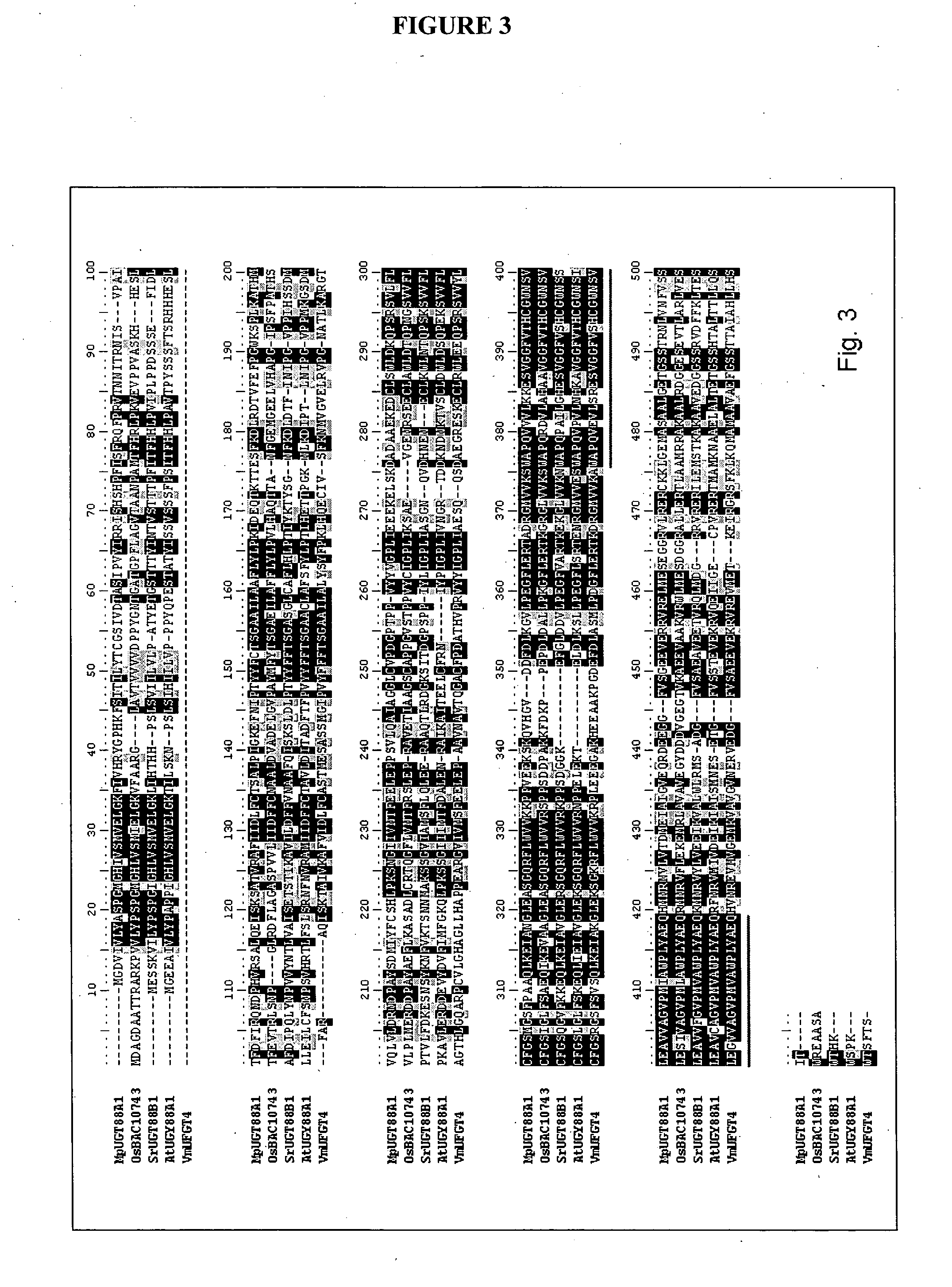Glycosyltransferases, Polynucleotides Encoding These And Methods Of Use
- Summary
- Abstract
- Description
- Claims
- Application Information
AI Technical Summary
Problems solved by technology
Method used
Image
Examples
example 1
Identification of a Phloretin Glycosyltransferase Sequence from Apple
Sequence Identification and Phylogenetics
GenBank apple EST sequences were BLAST searched (expect value of exp−05) using previously published UGT genes from GenBank. EST sequences were automatically parsed through two rounds of contig building and a set of “non-redundant contig” sequences was derived. Amino acid alignments of predicted proteins were constructed using ClustalX (version 1.8). All proteins were checked for the presence of the common signature motif of 42 amino acids found in plant UGTs (Li et al. 2001). A full-length sequence in each contig was selected for complete sequencing.
For phylogenetic analysis all amino acid sequences were initially aligned using ClustalX then manually edited. Arabidopsis UGT sequences were obtained from the following website http: / / www.p450.kvl.dk / UGT.shtml. Confidence values for groupings in phylogenetic trees were obtained using BOOTSTRAP N-J TREE using 1,000 bootstrap tria...
example 2
Analysis of the Expression Profile of the Phloretin Glycosyltransferase in Plants
Plant Material, RNA Extraction and qPCR
Total RNA was isolated from apple tissues by a modified silica RNA extraction method (Nieuwenhuizen et al. 2007). The RNA concentration of each sample was measured using a NanoDrop® ND-1000 spectrophotometer (NanoDrop Technologies, Inc., Wilmington, Del., USA). RNA samples (˜3 μg in 30 μl reactions) were treated for 30 min at 37° C. with DNase I (Ambion, Inc., Austin, Tex., USA) to remove any minor genomic DNA contamination. The DNase was heat inactivated for 30 min at 50° C. Reverse transcription was performed in 20 μl reactions as per manufacturer's instructions using SuperScript III™ RNase H-reverse transcriptase (Invitrogen, Auckland, NZ), 500 ng of RNA and the primer. NotI-PA 5′-GACTAGTTCT AGATCGCGAG CGGCCGCCCT(15)-3′ (SEQ ID NO:17).
Quantitative PCR reactions (20 μL) were repeated four times on an ABI Prism 7900HT (Applied
Biosystems, Foster City, Calif., USA) ...
example 3
Expression of the Phloretin Glycosyltransferase in E. coli and Characterization of Enzymic Activity
Expression of MpUGT88A1 in E. coli
The open reading frame of EST111441 (MpUGT88A1) was amplified using primers RA335 5′-ACGGGATCCA TGGGAGACGT CATTGTACTG-3′ (SEQ ID NO:20) and RA336 5′-CCCAAGCTTT TATGTAATGC TACTAACAAA GTTGAC-3′(SEQ ID NO:21). Amplified bands were purified using Qiaquick® PCR cleanup columns (Qiagen GmbH, Hilden, Germany), digested with BamHI and HindIII (underlined in the primers above), and ligated into the corresponding sites of the pET30a(+) vector (Novagen, Madison, Wis., USA). The clone was sequence verified against the original EST. Recombinant N-terminal His6-tagged protein was expressed from pET-30a(+) plasmids in E. coli BL21-Codon-Plus™-RIL cells. Cultures were grown in a ZYM-5052 autoinducible media (Studier 2005) at 37° C. for 4 h at 300 rpm. The temperature was then lowered to 16° C. and incubation continued for a further 60 h. Recombinant proteins were pur...
PUM
| Property | Measurement | Unit |
|---|---|---|
| Fraction | aaaaa | aaaaa |
| Fraction | aaaaa | aaaaa |
| Fraction | aaaaa | aaaaa |
Abstract
Description
Claims
Application Information
 Login to View More
Login to View More - R&D
- Intellectual Property
- Life Sciences
- Materials
- Tech Scout
- Unparalleled Data Quality
- Higher Quality Content
- 60% Fewer Hallucinations
Browse by: Latest US Patents, China's latest patents, Technical Efficacy Thesaurus, Application Domain, Technology Topic, Popular Technical Reports.
© 2025 PatSnap. All rights reserved.Legal|Privacy policy|Modern Slavery Act Transparency Statement|Sitemap|About US| Contact US: help@patsnap.com



